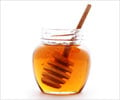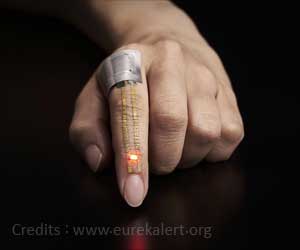Researchers have successfully managed to use honey and a seaweed extract to evolve a new material to dress wounds.
New Zealand researchers have successfully managed to use honey and a seaweed extract to evolve a new material to dress wounds. The dressing is the brainchild of Dr Peter Molan, a professor at the University of Waikato, who leads the university's world-renowned Honey Research Unit. The Unique Manuka Factor (UMF) rating was devised by Dr Molan about 10 years ago to show the level of activity in manuka honey being sold as an antibacterial substance. Widespread evidence shows manuka's antibacterial agents are effective at healing wounds.
Dr Molan created prototypes of the wound dressing about six years ago. The patch contains manuka honey gelled with sodium alginate - a food ingredient extracted from seaweed which helps the dressing absorb moisture. The result is a patch which is dry and can be easily handled despite the stickiness of honey, and one that offers antibacterial and anti-inflammatory properties. It does not stick to the skin, so is easily changed, lessening pain for patients.Dr Molan said the dressing would be particularly useful for chronic wounds resulting from diabetes. Type II diabetes is predicted to become a huge burden on health systems as obesity rates see more people succumbing to the disease - and the foot ulcers and wounds it often causes. "It means diabetic wounds can be actually healed, rather than just offering palliative care. It could mean fewer amputations which are often necessary when these wounds won't heal."
That, in turn, means lower costs for the health sector. "The cost of non-healing wounds would be up in the hundreds of millions of dollars," Dr Molan said. "A lot of wound care is done in the community, and this dressing doesn't need changing as often as conventional dressings, so it could save on time and travel costs."
The dressing, named Medihoney Antibacterial Honey Gel Sheet, has obtained regulatory approval as a medical device to be sold in Europe, and FDA approval for the US, said Scott Coulter, Chief Marketing Officer of the New Zealand-based Comvita, a leading manufacturer of natural products.
The dressing would also be available to the community on reimbursement through drug tariff in the UK and is already for sale in the New Zealand medical industry.
"The Gel Sheet developed by Dr Molan is a unique patented system for holding Medihoney Antibacterial Honey in contact with a wound while at the same time absorbing what the wound exudes," Coulter said. "Absorbency and antibacterial activity are two of the key benefits wound-care clinicians look for when evaluating wound dressings."
GPL/L









